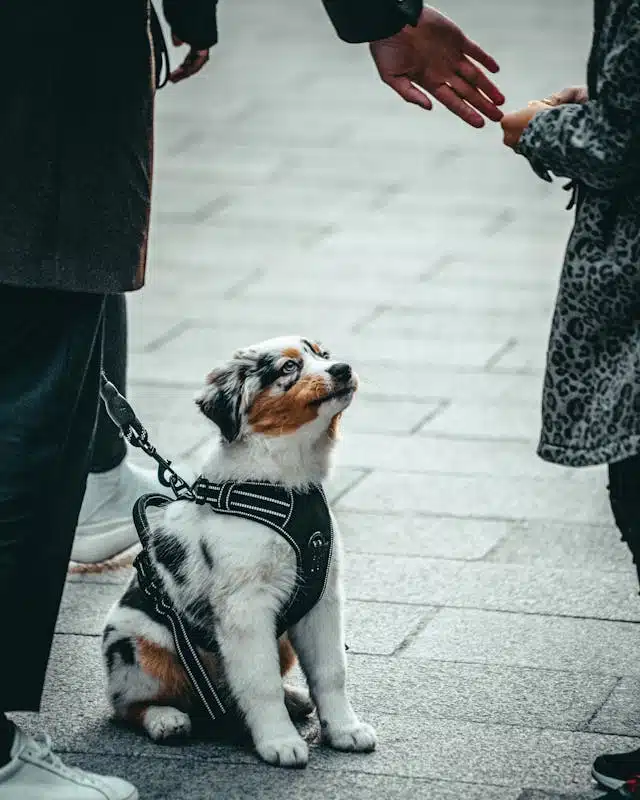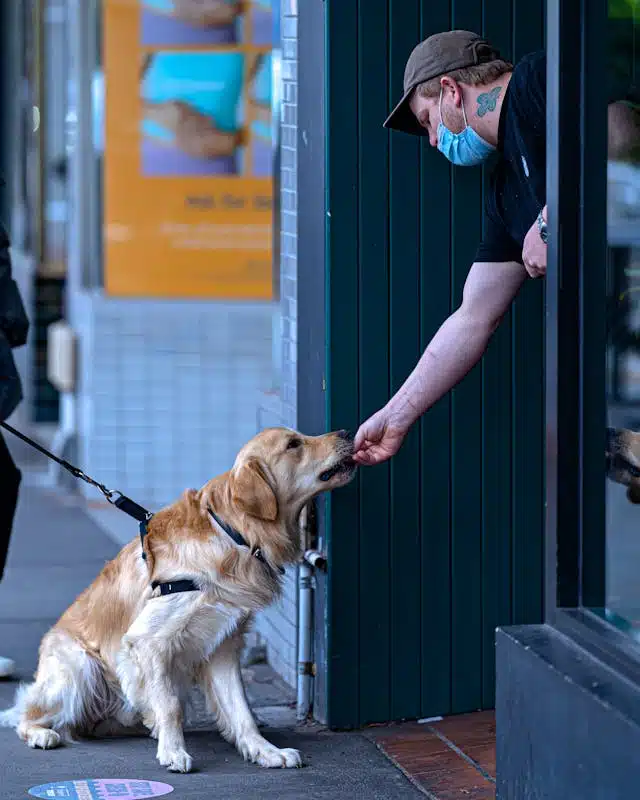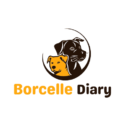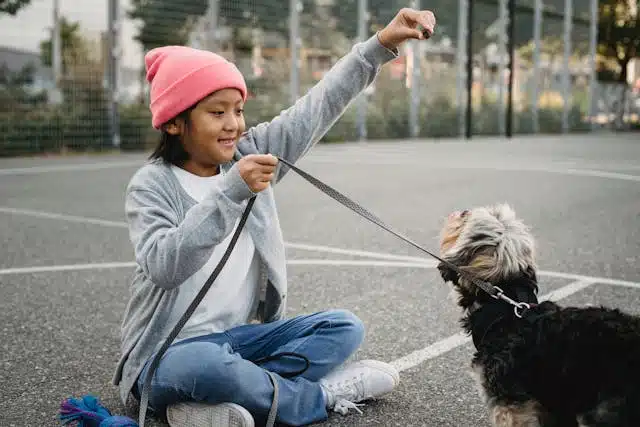Dog with leash troubles can make walks challenging. I know you’ve always wanted to walk your pup in the park, perfectly behaved by your side, matching your stride, but you’re not alone. It’s unfortunate that most pet parents don’t realize how much effort goes into teaching a dog good leash skills, especially if he’s reactive. That is until your dog yanks you and you faceplant on the asphalt, or they put the brakes on and you’ve gotta drag them down the sidewalk, or maybe even your dog kind of goes bananas at the sight of another animal or a human while you’re out on walks.
Whether your dog has an epic meltdown at the sight of a leash, don’t worry, there’s hope. In this article, we’re going to explore why leash reactivity happens but even better yet, help you teach your leash-reactive dog how to properly walk on a leash.
Table of Contents
ToggleWhat Is Leash Reactivity
So what is leash reactivity? Well, it’s honestly just a response that your dog has from being tethered or being put on a leash. Now some of those responses might look like pulling and barking or lunging, even snapping. Now these behaviors are not necessarily going to occur when your dog is untethered or just hanging out with you while off-leash.
Now, while leash reactivity can be related to aggression, leash reactivity is not always caused by aggression, and it’s important to know the difference between when it is related to aggression and when it’s not. That way, you can better understand why your dog might be experiencing some of these big emotions and better yet, walk through solutions more effectively with them.
The most likely reason for leash reactivity is fear. So say another pup gets a little too close to your dog or your pup mistakes a passerby for an imminent threat, sometimes it can actually occur because your dog gets too excited by somebody coming by and they wanna say hello and can’t get to them fast enough. In these cases, the leash actually causes frustration. It’s that constraint, that restriction. When a dog is on a leash, they have no out. Often, reactivity is triggered by an urgent need to act, which means your dog isn’t thinking through a situation, they’re simply responding to it. That is why they need your help.
How To Train Your Reactive Dog To Walk On A Leash

Getting your feisty pup to walk calmly on a leash can be no easy feat, but it is certainly possible, so follow these dog training tips to take that leash with more ease.
First, get real with your expectations. Success often takes months of practice, but you can hire a professional who can put a program into place for you and your dog so that both of you can work on specific skills that will help you with leash reactivity. They’ll give you the tools that you need to continue progressing long after those sessions have ended.
Start by trying to understand what causes your dog to react. You can participate in things like observation and exploration outings where you take your dog out in public, but you observe from a safe and tolerable distance. Pay attention to other animals and people and what they’re doing to see what your dog responds to that might pinpoint or indicate what might be a little overwhelming if they get too close to your dog.
As you watch over your pup, offer them positive reinforcement as they give you eye contact or check back in with you for comfort. This can really help normalize the abnormal but also encourage them to lean in on you more often. Increase the difficulty with your dog through each session, meaning bring them closer and closer to some of those previous triggers more frequently.
Now every dog is different, but here’s what we’d recommend. I’ll give you an example of a couple of sessions. Session one would look like starting out at about 50 yards away from the potential trigger with your dog. Now you’re gonna practice some really simple skill drills so it’s easy for your dog to follow while those distractions or potential triggers are far off in the background. Once you’ve practiced at about 50 yards, then you’re gradually gonna move a little bit closer and a little bit closer to those triggers.
Now you move to 45 yards and then to 35 yards and then go all the way back to 50 yards where you started again to give them an easy win. For session two, you might start a little bit closer, so at the 45-yard mark instead of the 50, and then gradually get closer and closer. Now at the 35 mark. Then maybe to the 30-yard mark. And then you’re gonna end that session back at the 45-yard mark where you started.
So for successive sessions, like say the next session, session three, you’re gonna gradually move closer and closer to what those triggering events might be because it’s gonna get easier for your dog.
So say session three after you completed one and two would look like starting at the 30-yard mark, right, and then going into 20 yards and then 10 yards and then bringing it all the way back again to that 30 mark before progressing again. Once you get closer and closer, you’re gonna wanna spend a little bit of time right there as you’re close to those triggers giving them time to assimilate to what’s in front of them.
Pay attention to your dog’s body language. Fixation or intensely staring in the direction of a trigger is a clear indicator that it might be too much for your dog. They’re not ready to take that next step yet. For example, if your dog is fixating or staring at a trigger and can’t focus on you or focus on play at that 15-yard mark, then you’re not gonna wanna stay at that 15-yard mark and advance towards that 10 and five-yard mark.
You’re gonna wanna work between that 20-yard and 15-yard mark to take it back, make it a little easier for your dog. Work between that yard line mark and then once their body language is exhibiting the same signs and signals of being more loose and relaxed and engage with you that they did at the 45-yard mark, then it’s time to go ahead and advance that in your session.
Layering in counterconditioning. Now with those sessions that I just went over doing some desensitization with your dog, you can layer in positive associations with former triggers. Counterconditioning simply means taking something that the dog had a preexisting negative emotional association with and turning it into a positive emotional association and one of the ways that you can do that is by providing positive reinforcement while you’re in the presence of those triggers, but it helps to have a longer-lasting activity like playing with their favorite tug toy or bringing out their favorite yummy Yak Chew, long-lasting Yak Chew that they can chew on in the presence of those triggers as well.
After a while when you do something special like this with your dog in the presence of those triggers, those triggers are no longer scary or concerning or worth reacting over. Instead, it now becomes a positive association and they look forward to their trips out with you where they get to enjoy their treats.
Pop your pup a Calm treat. If your dog is overstimulated even at a considerable distance, try an all-natural calming chew. You’ll wanna give one of these to your dog about 40 minutes before you start a training session. This can help take the edge off and help your dog chill during these sessions together and maybe even pick up a new skill or two during your session. If your dog is still extremely anxious or overwhelmed, it’s time to bring on board the help of your veterinarian and or a certified dog behavior professional.
Start with a loose leash. If your dog is a puller, you wanna practice loose leash walking so that you avoid putting any tension on that leash and spring-loading your dog before you even get started. Now you need to practice loose leash walking before going out into an environment where triggers will be plentiful.
Avoid triggers when you can while training. So for example, if you and your dog enjoy apartment or condo living and potty breaks outside are required, choose your routes for minimal exposure to those triggers until you have the opportunity to work completely through behavior modification.
Lean on a gentle leader if your dog pulls really hard. So if your dog has learned leverage, as in things that pull you straight off of your feet, then it might be a good idea to condition them to a head halter, like a Gentle Leader to help combat that. The head halter, like the Gentle Leader, can keep them from pulling or lunging forward abruptly.
Leash your dog during normally unleashed moments. For example, place a leash on your dog during normal routine activities that they’re typically off-leash, such as eating a meal topped with their favorite supplement. Place their leash on for a quick enrichment game or a game of tug so that they get used to it and more comfortable with it.
Avoid flooding fearful or reactive dogs. Flooding is an old outdated technique where you basically expose your dog to their triggers in an intense capacity. An example would be your dog-reactive dog taking them on a leash to a dog park in hopes that they’ll just get over it. You can’t fix fear with fear and this can have the opposite of the intended effect and can increase the likelihood of more severe aggressive behaviors.
Tips For Preventing Dog With Leash Reactivity

Now leash reactivity is a whole lot easier to prevent than it is to treat, so try these tips to help prevent or stop leash reactivity before it even begins. Socialize your dog with other animals and people from an early age. You can also bring your puppy to group training classes so that they can learn from other people and other puppies in a social setting.
Remember that tension breeds tension, so if your dog is pulling refrain from following that pull. Reward the behaviors that you wanna see repeated with a tasty treat or a good girl. Start early and keep at it. Consistent training today can have a significant positive impact on how your puppy or your dog responds to novel stimuli in the future.
Remember that you’re not alone. Many pet parents deal with leash reactivity based on factors that have much to do with post-pandemic lifestyle changes. Give yourself grace and be patient with your pup as you work to alleviate their stress. Whether it’s fear or frustration or even a little protectiveness that is getting in the way, with a little bit of consistency and you sprinkle in some confidence-boosting and add a dash of those trust-building leadership skills, you can tame even the most explosive of beasts.



